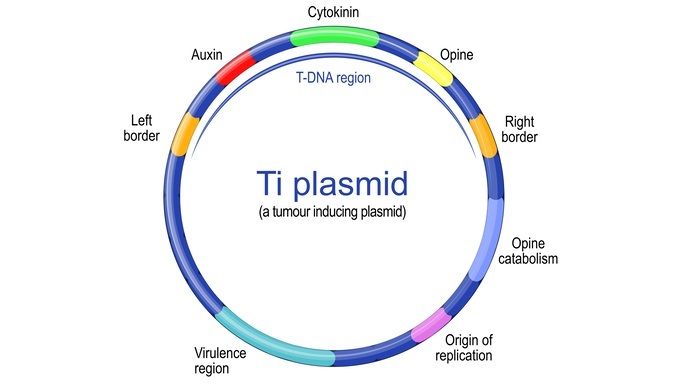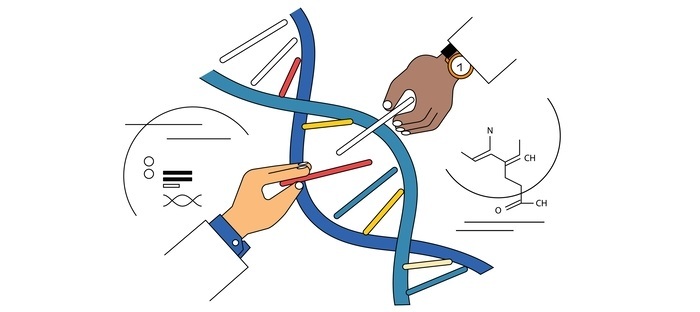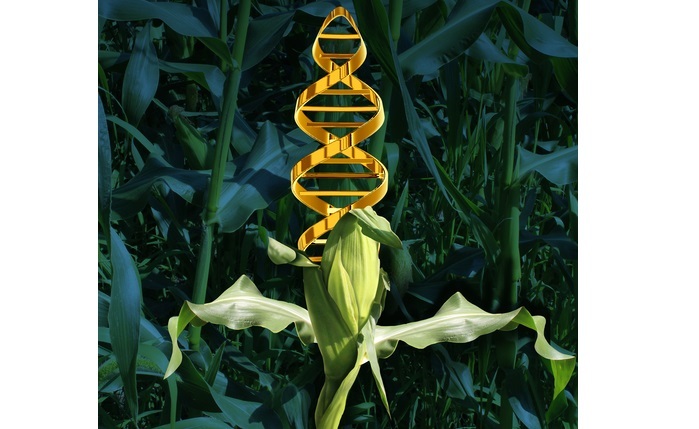
 Data Structure
Data Structure Networking
Networking RDBMS
RDBMS Operating System
Operating System Java
Java MS Excel
MS Excel iOS
iOS HTML
HTML CSS
CSS Android
Android Python
Python C Programming
C Programming C++
C++ C#
C# MongoDB
MongoDB MySQL
MySQL Javascript
Javascript PHP
PHP
- Selected Reading
- UPSC IAS Exams Notes
- Developer's Best Practices
- Questions and Answers
- Effective Resume Writing
- HR Interview Questions
- Computer Glossary
- Who is Who
What Are Plant Transformation Vectors?
Introduction
Genetic transformation is an essential tool in the field of plant biotechnology that allows the introduction of desired traits into plants. Plant transformation vectors are genetic tools that enable the transfer of foreign genes into plant cells.
These vectors act as vehicles to carry the desired genes into the plant genome, where they can be stably integrated and expressed. Below we shall investigate an overview of plant transformation vectors, their components, and their use in plant biotechnology.
Plant Transformation Vectors-Their Components
Plant transformation vectors are circular DNA molecules that can be introduced into plant cells using various techniques such as Agrobacterium-mediated transformation, biolistics, and electroporation.

These vectors typically contain the following components ?
Selectable Marker Genes: These genes confer resistance to an antibiotic or herbicide that is toxic to plant cells. The presence of the selectable marker gene allows for the selection and identification of transformed cells.
Promoters: These are DNA sequences that control the expression of the foreign gene in the plant cell. Promoters can be constitutive or inducible, depending on the desired expression pattern.
Reporter Genes: These genes produce visible or measurable products that allow for the identification of transformed cells. Examples of reporter genes include the green fluorescent protein (GFP) and beta-glucuronidase (GUS).
Multiple Cloning Sites (MCS): These are regions in the vector that contain unique restriction enzyme recognition sequences, allowing for the insertion of the foreign gene into the vector.
Origin of Replication (ORI): This is the DNA sequence that allows the vector to replicate in the host plant cell.
Types of Plant Transformation Vectors
There are several types of plant transformation vectors, each with unique features that make them suitable for specific applications.
The following are some examples of plant transformation vectors ?
Binary Vectors
Binary vectors are the most commonly used plant transformation vectors. They are called binary vectors because they require two separate plasmids to function. The first plasmid, called the helper plasmid, contains the virulence genes required for Agrobacterium-mediated transformation.
The second plasmid, called the binary vector, contains the foreign gene, selectable marker gene, and other necessary elements. The binary vector is mobilized into Agrobacterium cells by transferring it from E. coli cells that contain the binary vector and the helper plasmid. Binary vectors offer several advantages, including the ability to transfer large DNA fragments, low copy number, and efficient gene expression.
Ti Plasmid Vectors
Ti plasmid vectors are based on the tumor-inducing (Ti) plasmids found in Agrobacterium tumefaciens. These vectors are suitable for Agrobacterium-mediated transformation and can be used to transform a broad range of plant species. Ti plasmid vectors typically contain the virulence genes, the selectable marker gene, the foreign gene, and other necessary elements.
Ribonucleic Acid (Rna) Vectors
RNA vectors are a type of transient expression vector that uses RNA molecules to express foreign genes. These vectors are suitable for transient expression assays and can be used to study gene function and regulation. RNA vectors can be delivered into plant cells using particle bombardment or infiltration methods.
Applications of Plant Transformation Vectors
Plant transformation vectors have numerous applications in plant biotechnology. Some of these applications include ?
Genetic Engineering
Plant transformation vectors are used in genetic engineering to introduce desired traits into plants. These traits can include increased yield, disease resistance, and improved nutritional content. The introduction of foreign genes into plants can also help in the production of pharmaceuticals and industrial products.
Gene Function Studies
Plant transformation vectors can be used to study the function of specific genes in plants. By introducing foreign genes into plant cells, researchers can manipulate gene expression and study the effects on plant growth, development, and physiology. This information can be used to identify genes involved in specific pathways, as well as to elucidate the molecular mechanisms underlying plant development and response to environmental stresses.
Genome Editing
Plant transformation vectors can also be used for genome editing, which involves making specific changes to the plant genome. Genome editing tools such as CRISPR/Cas9 can be used to introduce precise changes to the plant genome, including deletions, insertions, and substitutions. This technology has numerous applications in plant breeding, including the creation of crops with improved yield, disease resistance, and nutritional content.

Molecular Farming
Plant transformation vectors are used in molecular farming, which involves using plants as bioreactors for the production of pharmaceuticals and industrial products. By introducing foreign genes into plants, researchers can produce proteins and other compounds that have therapeutic or industrial applications. This technology has the potential to revolutionize the production of vaccines, antibodies, and other biologics, as well as to provide a sustainable and cost-effective alternative to traditional manufacturing methods.
Challenges and Future Directions
Despite the numerous applications of plant transformation vectors, there are still several challenges that need to be addressed to fully realize their potential. One of the major challenges is the development of efficient and reliable transformation protocols for a wide range of plant species. Although significant progress has been made in this area, many plant species remain recalcitrant to transformation, limiting their use in plant biotechnology.
Another challenge is the need to ensure the safety and regulatory compliance of genetically modified crops. Concerns about the potential environmental and health impacts of GM crops have led to strict regulations governing their production and use. As a result, it is essential to ensure that GM crops are thoroughly tested and evaluated before they are released into the environment.

Future directions in plant transformation vectors include the development of more precise and efficient genome editing tools, the expansion of plant species that can be transformed, and the optimization of molecular farming systems for the production of high-value compounds.
Conclusion
Plant transformation vectors are essential tools in plant biotechnology, allowing for the introduction of foreign genes into plant cells and the production of crops with desirable traits.
These vectors have numerous applications, including genetic engineering, gene function studies, genome editing, and molecular farming.
Despite the challenges that remain, plant transformation vectors hold tremendous promise for the future of agriculture, medicine, and industry.

